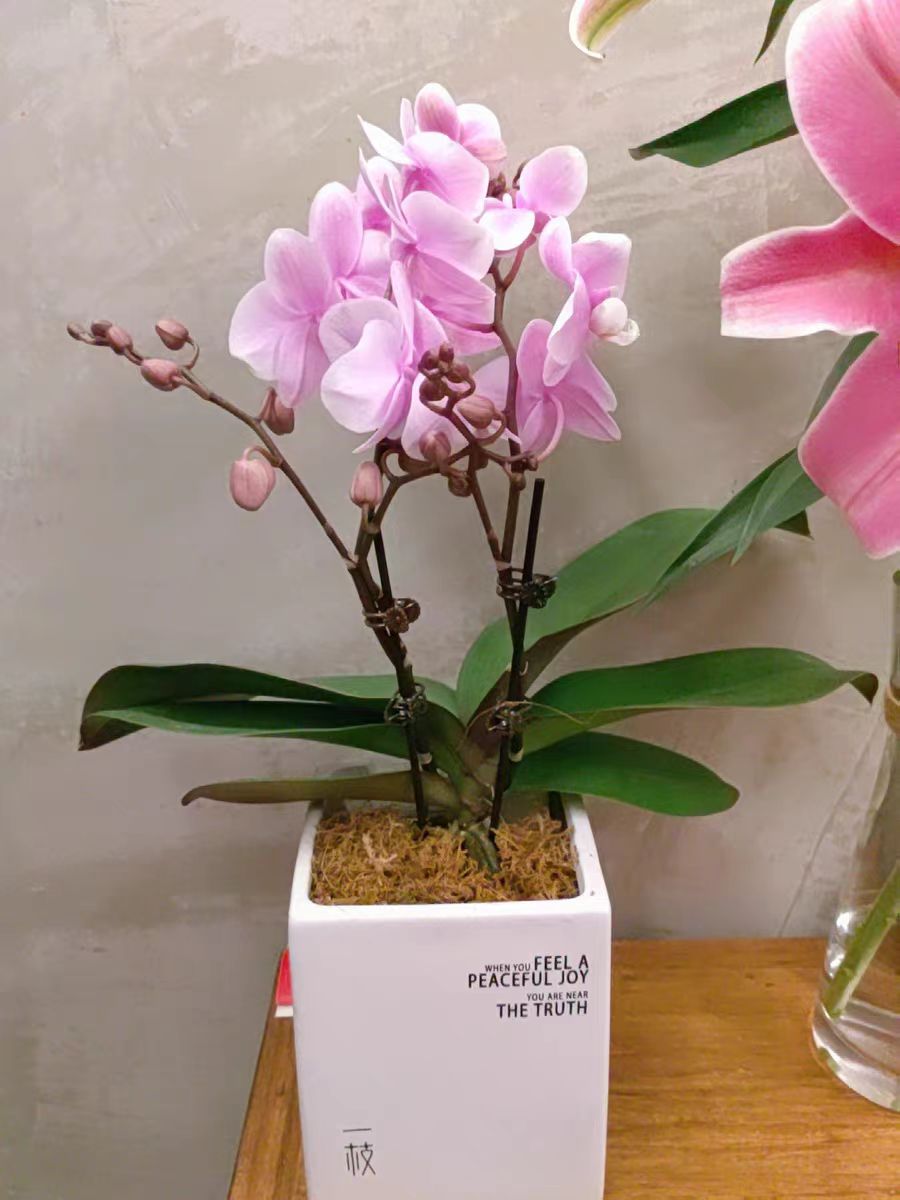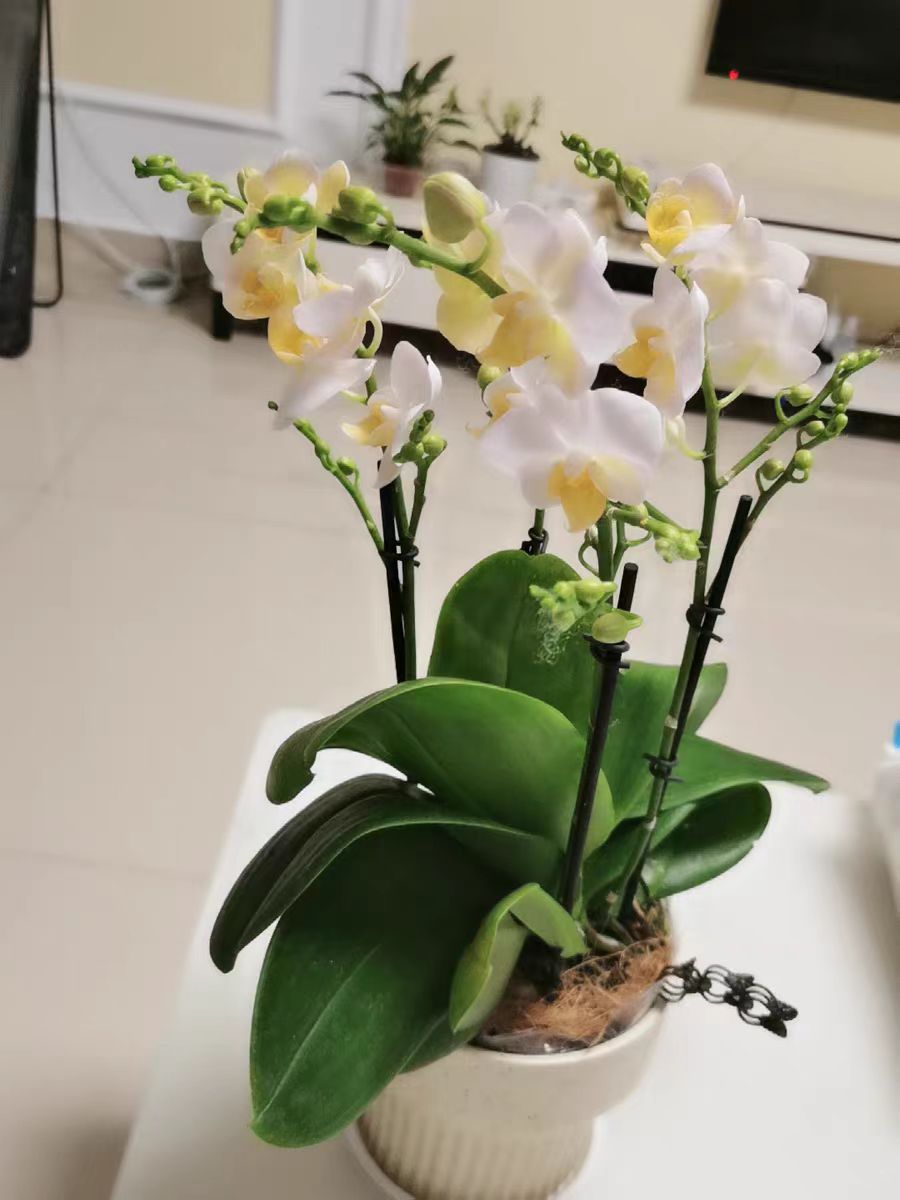The Phalaenopsis "Juedai Shuangjiao", also known as the Pink Pearl, once won the third prize at the Taiwan Orchid Exhibition and is deeply loved by flower enthusiasts.
"Juedai Shuangjiao" is a pink medium-flowered Phalaenopsis, which is similar in appearance to the Phalaenopsis "Baby", but it is more gorgeous. The lip of "Baby" is dark red, while that of "Juedai Shuangjiao" is bright rose red. The petals and sepals of "Baby" have obvious veins, and the upper sepal is round and wide. The petals and sepals of "Juedai Shuangjiao" have lighter veins, and the upper sepal is more slender.
Cultivation Methods
1. Temperature: The Phalaenopsis "Juedai Shuangjiao" is suitable for growing at a temperature of 15 - 28°C. When the temperature is lower than 10°C in winter, it is necessary to keep it warm, for example, by using heating equipment. When the temperature is higher than 32°C in summer, it is necessary to cool it down. You can use an air conditioner or a shade net to avoid damage to the plant caused by high temperature.
2. Light: It likes scattered light. Place it by the window indoors to avoid direct sunlight. In spring, autumn and winter, you can appropriately increase the light exposure time. However, in summer, use a shade net with a shading rate of 50%-70% to block the light to prevent the leaves from being sunburned.
3. Water: Follow the principle of "watering when the soil is dry and then thoroughly". Insert your finger 2-3 centimeters into the planting medium. If it feels dry, water it thoroughly so that the excess water can flow out. Water once or twice a week in spring and autumn, once every 2-3 days in summer, and once every 7-10 days in winter. Water in the morning or evening.
4. Planting Medium: Mix sphagnum moss and bark in a ratio of 3:2. Sphagnum moss has good water retention, and bark has good air permeability. Such a combination can not only ensure that the roots have sufficient water supply but also allow the roots to breathe freely. Replace the planting medium once a year or two in spring or autumn to ensure the air permeability and fertility of the medium.
5. Fertilization: During the vigorous growth period (spring and autumn), apply a thin special liquid fertilizer for orchids once a month, and dilute it according to the instructions. Before the flowering period, increase the application of phosphorus and potassium fertilizers, such as potassium dihydrogen phosphate. Dilute it into a 1000-fold solution and spray it on the leaves or pour it into the roots once every 10-15 days, which can promote flower bud differentiation and blooming.
Precautions
1. Ventilation: Ensure good ventilation in the cultivation environment. Open the windows regularly or use a fan, but do not let the wind blow directly on the plant.
2. Pests and Diseases: Common diseases include soft rot and anthracnose, and common pests are aphids, spider mites, etc. Deal with pests and diseases in a timely manner when found. Use fungicides such as carbendazim for soft rot, and use imidacloprid for aphids.
3. Pruning: After the flowers wither, cut off the flower stem 2-3 nodes above the base of the flower stem. If you want the plant to bloom a second time, keep 3-4 nodes of the flower stem and fertilize it.
Is the Phalaenopsis "Juedai Shuangjiao" easy to cultivate?

Share with
Tagged in :




Leave a Reply